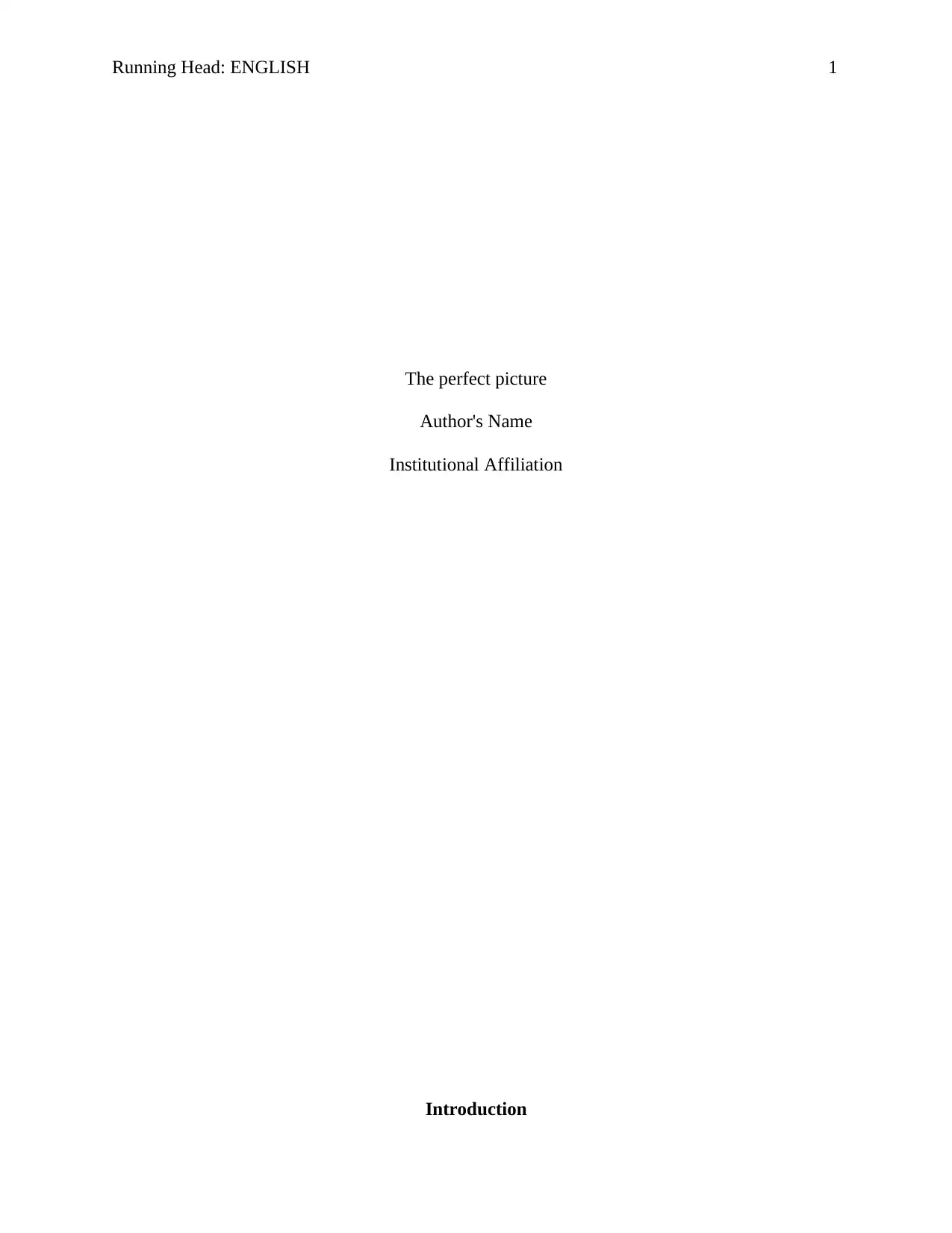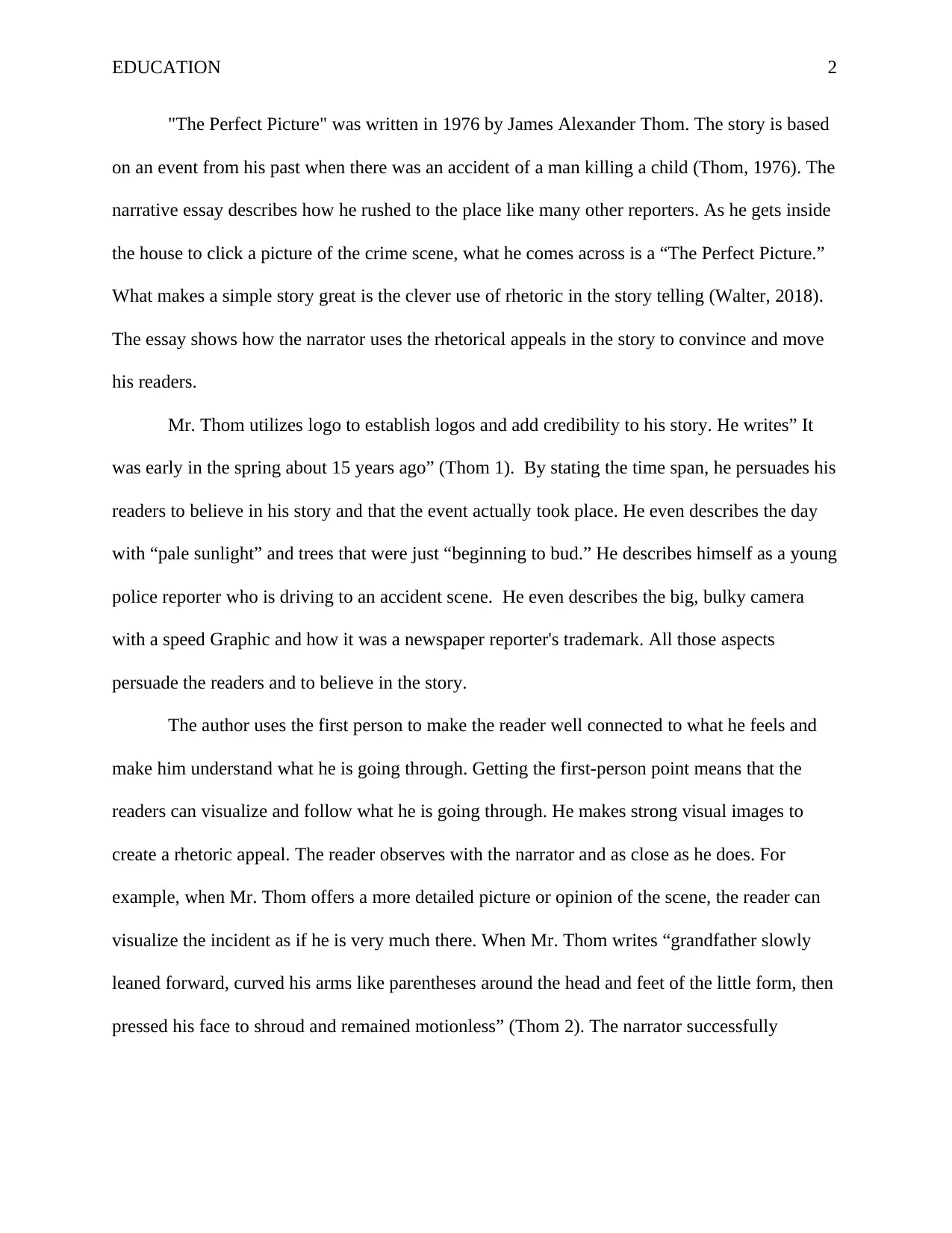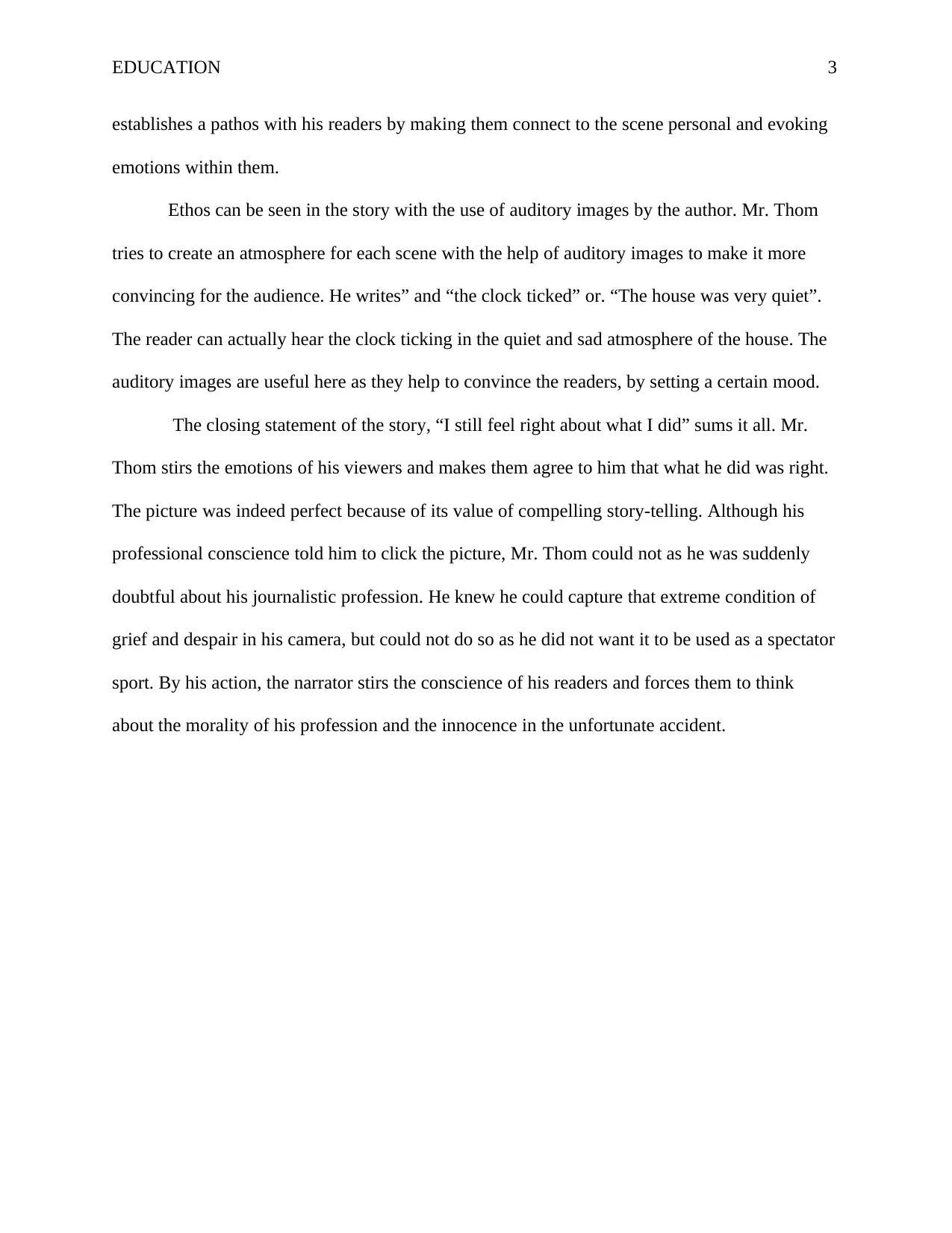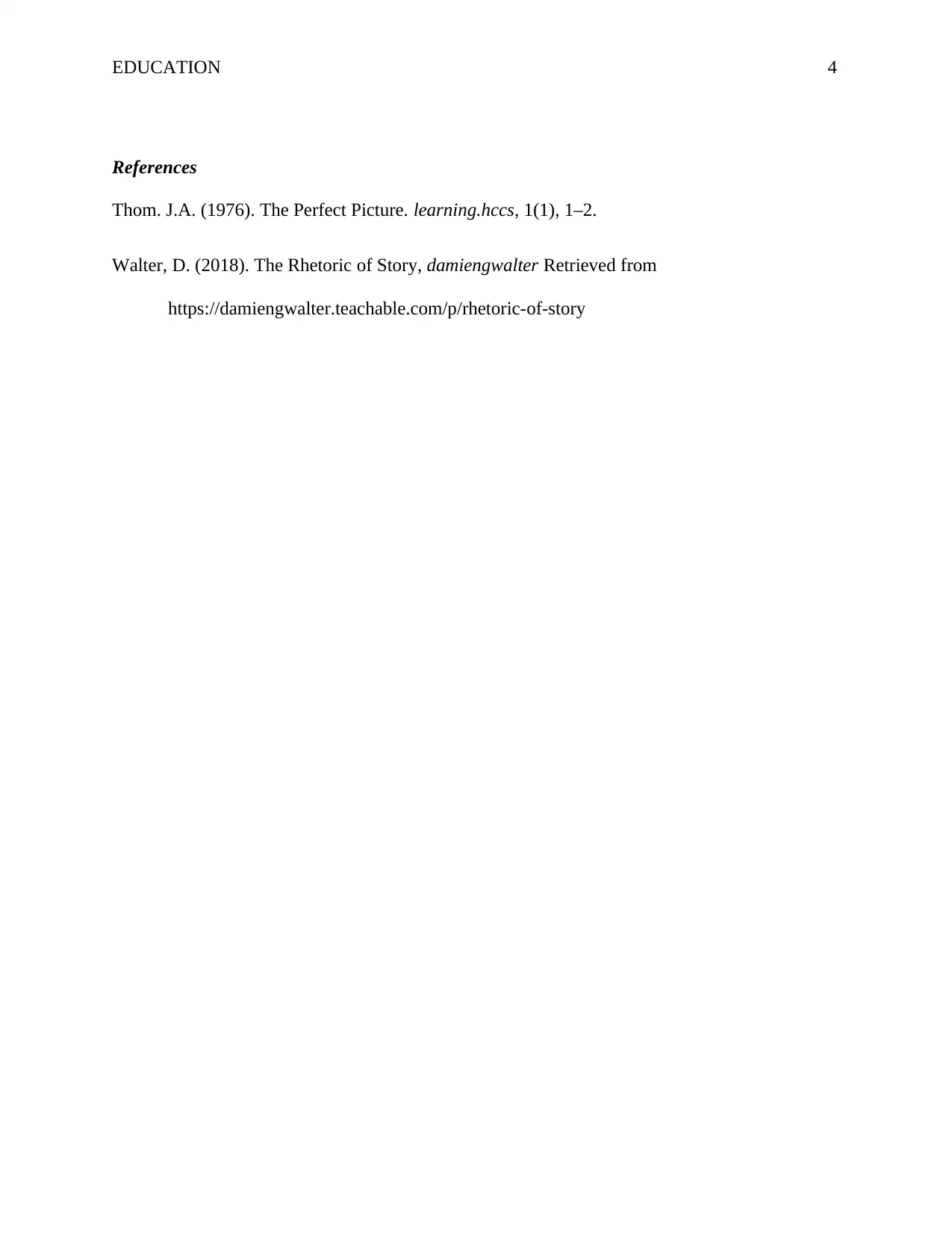Analysis of Rhetoric: Ethos, Pathos, Logos in 'Perfect Picture'
VerifiedAdded on 2021/09/14
|4
|707
|223
Essay
AI Summary
This essay provides a detailed analysis of James Alexander Thom's "The Perfect Picture," focusing on the author's effective use of rhetorical devices to engage and persuade readers. The essay highlights how Thom employs logos by establishing a credible timeline and setting, using vivid descriptions to create a believable narrative. The first-person perspective enhances the reader's connection to the narrator's experiences, while strong visual and auditory imagery establishes pathos and ethos, respectively. The analysis emphasizes how Thom's storytelling stirs emotions and prompts reflection on the morality of journalistic practices, ultimately leading readers to empathize with the narrator's decision not to capture the photograph, reinforcing the story's profound impact. Desklib offers a platform to explore similar essays and academic resources for students.
1 out of 4






![[object Object]](/_next/static/media/star-bottom.7253800d.svg)